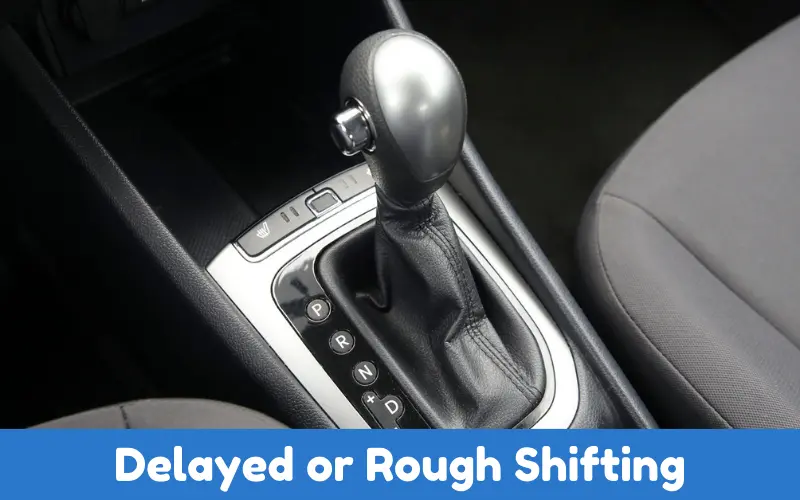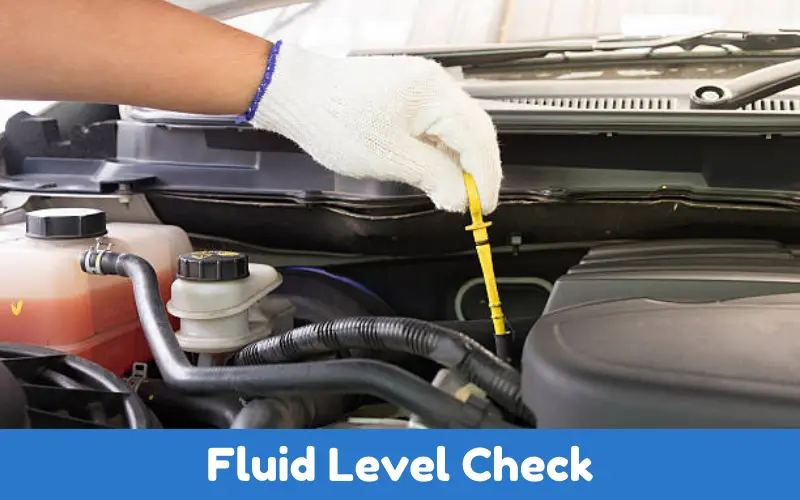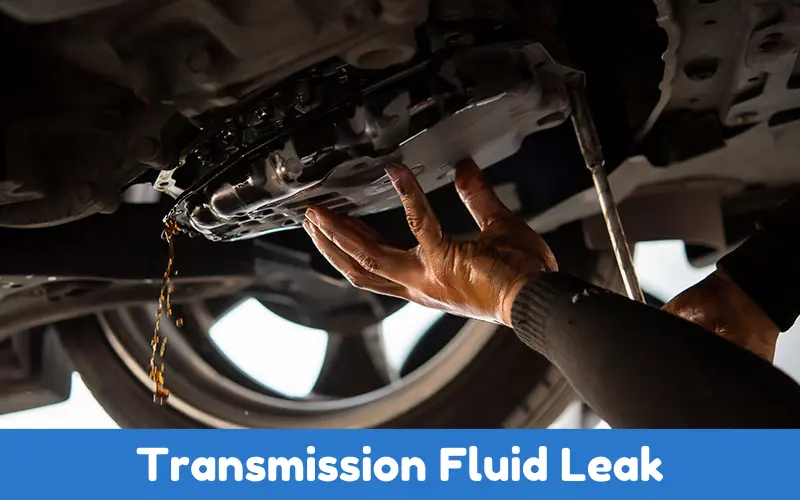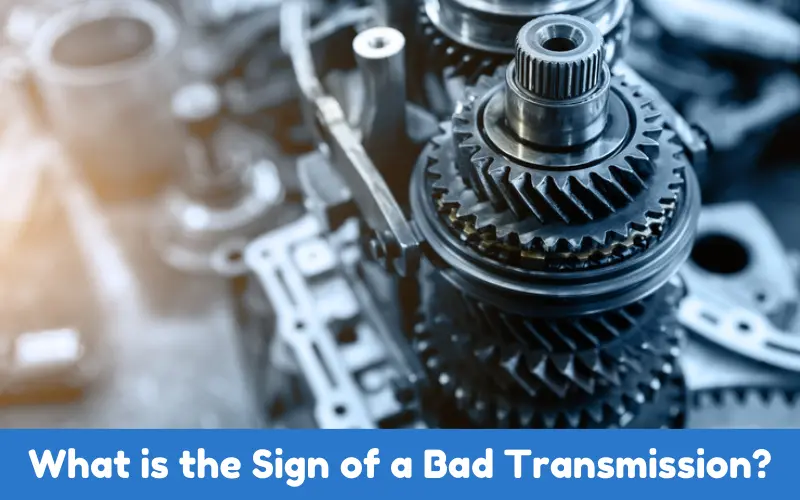The transmission is one of the most important parts of your car because it transfers engine power to the wheels. If your transmission is not functioning properly, it can cause major problems.
Besides, it can cost you a lot of money if the problem is not fixed quickly. In this post, I will discuss the sign of a bad transmission to help you determine whether you need to see a mechanic.
Article Summary
Understanding Transmission Functionality
Before we discuss bad transmission signs, let’s look at transmission function. There are two types of transmission: automatic and manual. The principle of the technique is quite similar to a gearbox in manual transmission.
- Automatic Transmission: Automatic transmission is a type of vehicle transmission that shifts gears automatically by using multiple disc-clutches and hydraulic mechanisms rather than a manual shift.
- Manual Transmission: You need to manually change gears with a clutch pedal and gear shift.
Regardless of which type it is, any issues with your transmission can compromise the performance and safety of your vehicle.
Sign of a Bad Transmission
Signs of a bad transmission are:
Unusual Noises
The first warning sign of a dangerously low transmission level is a strange noise when the car is in gear, so listen for:
- Grinding or Shaking: This may indicate that the gears are not engaging properly.
- Whining or Humming: This could be low transmission fluid or internal problems.
Slipping Gears
If you hear your car or truck changing gears that you don’t remember shifting into or out of when you’re driving or feel a transmission out of gear slipping, it’s likely a transmission problem.
An automatic or manual transmission might also feel like a loss of power, which means that your engine isn’t providing enough power to not allow the transmission to shift easily and smoothly.
This symptom might also indicate any of the following:
- Worn-out gears or clutches.
- Low or contaminated transmission fluid.
Delayed or Rough Shifting
Yet another alarm bell is a slight delay in speeding up (for an automatic that would include a rough shift from the drive) or when the vehicle is experiencing a delay in selecting a higher gear when asked (‘delay’ refers to a ‘lag’ in English, meaning the moment just before the shift or the moment just before a vehicle revs up).

In an automatic vehicle, this might delay the vehicle’s recognition when you put it into drive and then move it. In a stick shift, this is a moment when you ask for a higher gear, and the clutch isn’t fully engaging.
Fluid Leaks
Transmission fluid lubricates and cools components, so it’s probably leaking if you see bright red or brown fluid where your car is parked.
Low transmission fluid can overheat the transmission components, which can be expensive to replace.
Warning Lights
Almost every modern car will have a warning light on the dashboard related to the transmission.
If the check engine light comes on, or you have a specific light that relates to the transmission, get the vehicle checked out by a professional and follow up accordingly. If you ignore these warning signs, severe transmission damage can result.
Burning Smell
A burning smell while driving can be a symptom of overheated transmission fluid in a car. This can occur, for example, if the fluid level gets too low.
As a result, it cannot cool the transmission effectively and, therefore, overheats. Pull over first and check the fluid if you detect the burning smell.
Unresponsive Transmission
Suppose you put the car into gear, and it doesn’t move. In that case, a serious problem warrants an immediate trip to the mechanic to rule out a failing transmission. Maybe you hear some noise or vibration. Still, you’re looking at a potentially complete failure.
Warning Messages
Some cars have specific messages on the dashboard indicating transmission problems. If you see such messages, do not leave them.
How Do You Test For a Bad Transmission?
Testing for a bad transmission can involve a test drive and several tests and observations that help pinpoint the issue. Here are the steps:
Visual Inspection: Look underneath the vehicle for leaks. The presence of a puddle of red or brown fluid indicates a leak.
Fluid Level Check: Check the transmission’s oil level by removing and reinserting the dipstick, carefully avoiding creating a frothy or bubbling fluid. If its level is low, recheck after topping off with the correct fluid type as indicated in your owner’s manual.

Fluid Condition: Check the fluid’s color and smell. Transmission fluid should be bright red and clear. Transmission fluid that is dark and smells burnt has been contaminated.
Listen For Unusual Noises: Look under the car remotely. You might see a cloud of smoke rising. This could mean a fluid leak. Start and drive the car slowly and sit for a while, with the ignition off, in the parking spot. Listen for a sudden or loud noise.
Note if it’s fast, like a sputter or whine, or slow, such as a whirlwind or a grinding noise. Slow noises or grinding when your vehicle stands still can indicate internal transmission problems. If these or any other strange sounds are present, have the vehicle checked out by a professional.
Test Drive: Drive it a short distance. Watch for noticeable slippage, difficulty shifting, or lagging engagement when accelerating or changing gears.
Check Engine Light: If the check engine indication is on, buy an OBD-II scanner, connect it to the vehicle’s onboard diagnostic port, and obtain the country codes that can signal transmission trouble.
Have any of them ever given you a warning? If so, consult a mechanic.
How To Fix a Bad Transmission?
For any vehicle owner, a transmission problem can be stressful. So, when you notice certain signs of transmission failure, your first task is to recognize the symptoms. After this here comes the solution. So, fixes for a bad transmission are:
1. Low or Contaminated Transmission Fluid
Check Fluid Levels: First, check the fluid level by referring to the dipstick (often labeled as such). Add the right fluid (check your owner’s manual first).
Fluid Change: If the fluid is dark or smells like it’s been burnt, it’s time for a fluid change. When draining the old fluid, place a container underneath to catch any spillage. The used oil from your car should never be poured down the drain, as it threatens waterways and local wildlife.
- Raising the vehicle on jack stands.
- Removing the drain plug to let the fluid out.
- Replacing the filter if applicable.
- Replacing the drain plug and filling it with new fluid.
2. Transmission Fluid Leak
Locate the Leak: You need to figure out where the leak is. Figure out whether this is a seal, gasket, or hose that needs replacing.

Seal Replacement: Leak comes from seal or gasket. Replace seal or gasket Often, that means:
- Removing the transmission pan to access the gasket.
- Cleaning the mating surfaces.
- Installing a new gasket and reattaching the pan.
Professional Help: If it’s coming from a complex part such as the front seal, it’s best to take it to a mechanic.
3. Slipping Gears
Check Fluid Levels: Slipping may be due to low fluid, so check out the level and condition of the fluid.
Adjust the Bands: For manual transmissions, the bands may need adjustment. This involves:
- Locating the adjustment screws on the transmission.
- Tightening or loosening them as per specifications.
Professional Diagnosis: If issues persist, it may indicate internal wear that requires professional evaluation.
4. Delayed or Rough Shifting
Transmission Fluid Check: Ensure fluid levels and quality are acceptable.
Throttle Position Sensor (TPS): In an automatic transmission, the faulty TPS could be one of the causes of shifting problems. It may be why your TPM is red, so you should test it and change it if necessary.
Diagnostic Check: If the problem continues, a diagnostic scan tool can identify error codes that specify electronic trouble or worn parts.
5. Unusual Noises
Fluid Levels: Low or dirty fluid tends to make noise. Washer fluid check and fill if needed.
Inspect Gears And Clutches: If worn, look at them, replacing the affected gears or clutches if necessary.
Professional Inspection: For persistent or severe noise, a mechanic should assess the internal components.
6. Warning Lights
Diagnostic Scan: Get an OBD-II scanner. It should tell you the error codes triggering the warning, which will hint at what is broken.
Follow-Up Repairs: Fix whatever the code says, whether it’s a sensor replacement, a fluid change, or something else.
Can You Drive with a Bad Transmission?
It is not wise to drive a car due to a faulty transmission, which will easily cause serious security problems.
Signs such as slipping gears, not having hydraulic fluid or normal transmission fluid, delaying in shifting the gears, jerking and flying the car out of the gear, and sounding noises of the engine and the gear while driving indicate the deployment of the bad transmission.
Thus, it reminds you not to drive the car because driving will lead to more damage and enhance the harm.
If you add a failing transmission system to the equation, you may end up with a car that cannot be controlled and put you in a dangerous situation on the road.
If you notice signs of transmission problems, take your car to a certified mechanic as soon as possible to save your engine and protect your safety. Give priority to the health of your car.
FAQs on Sign of a Bad Transmission
What Are the Common Signs of Transmission Problems?
Tell-tale signs include squealing noises (through grinding or whining), slipping gears, delays in shifting or shifting that generally doesn’t feel quite right, fluid dripping from the car, and dashboard warning lights.
How Can I Check My Transmission Fluid?
The transmission fluid is checked by finding the dipstick (usually conspicuously marked), pulling it out, wiping it with a clean rag or cloth, reinserting it, pulling it out again, and reading the level and appearance of the liquid (which is hoped to be red and clear and at the proper level).
Can I Drive My Vehicle If the Transmission is Slipping?
It is not a good idea to keep driving a vehicle with a slipping transmission, especially if it has this type of vehicle, as you are damaging it, making it unsafe to drive. You should have the vehicle inspected as soon as possible.
How Often Should I Change My Transmission Fluid?
It is advisable to change transmission fluid once every 30,000 to 60,000 miles. But do consult your vehicle’s manual, as the type of transmission will differ depending on your model.
When Should I Seek Professional Help For Transmission Issues?
That’s when it is time to seek professional help, such as when you’re uncomfortable fiddling with repairs, when basic fixes don’t work, or when the damage you’ve done creates dangerous driving conditions or strands you in a lonely parking lot, whimpering like a lost five year old.
Conclusion
Knowing the warning signs will save you time and money, prevent you from getting stranded, and save you from a road accident.
Regular maintenance and prevention should be your goal, and immediate attention to the unusual should help you keep your transmission in good shape and your vehicle on the road and out of the garage.
If you notice any of the signs above, regularly see a mechanic to be warned before it goes wrong.

